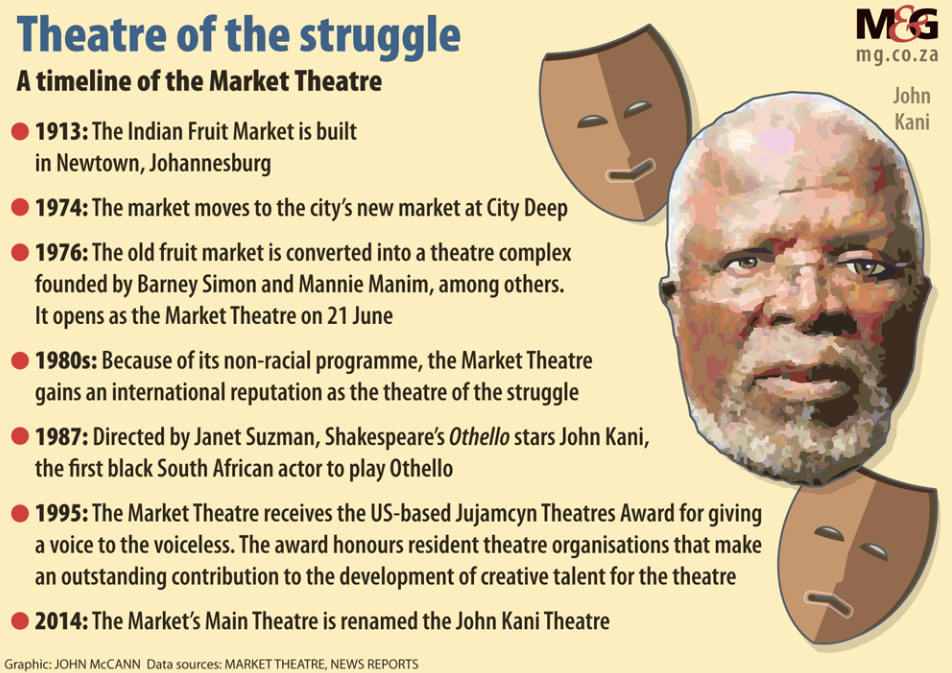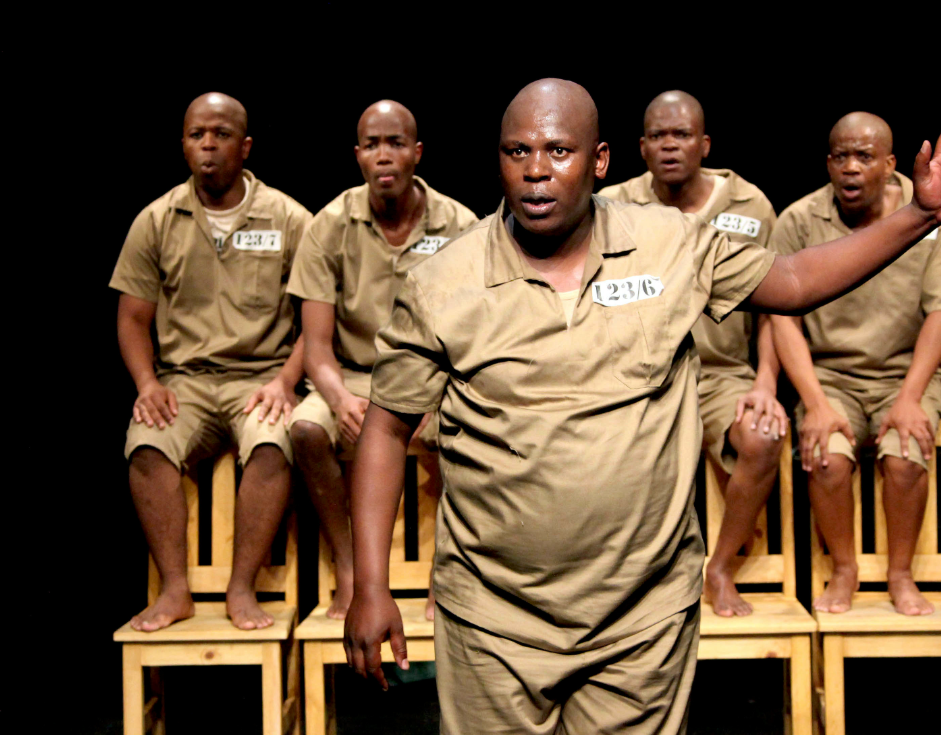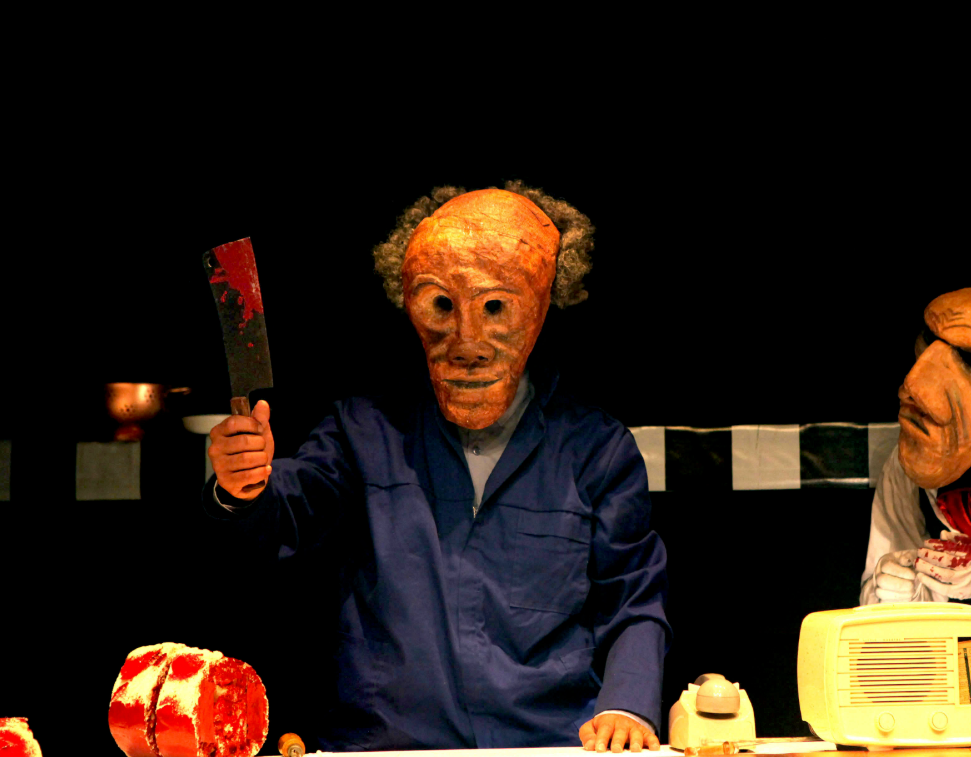John Kani in Nothing But The Truth. (Photo supplied)
Johannesburg is a city where the pavements speak, if you listen close enough — stories beneath tar, between bricks and rising in spaces that have defied silence.
Among these sacred spaces is a building that once bustled with the rhythms of trade: fruit piled high, hands exchanging change, spices scenting the air.
But beneath that everyday chaos, something deeper was always stirring because the building that housed Johannesburg’s Indian Fruit Market would become one of South Africa’s most radical, revolutionary cultural sites — The Market Theatre.
Today, 49 years after that transformation, the Market Theatre still stands. Not just as a venue but as a living archive of resistance, artistry and the unwavering human urge to speak truth to power.
It is no accident that The Market Theatre was born in 1976, a year that ripped off the apartheid regime’s mask of control.
On 16 June 1976, thousands of students across the country rose in peaceful protest against the forced use of Afrikaans as a medium of instruction in black schools. What followed was state violence that left hundreds, possibly even thousands, dead. That year became etched in our bones.
Just three days later, on 19 June 1976, Mannie Manim and the late, legendary Barney Simon founded The Market Theatre inside the very structure built in 1913 for the Indian Fruit Market.
It was prophetic timing. As the streets burned with rage and sorrow, this theatre opened as a space of artistic defiance, where the suppressed stories of black South Africans could breathe.
The theatre’s existence challenged apartheid laws — multi-racial casts performed for integrated audiences in defiance of segregation. It was a rebellion with stage lights and scripts. It was activism in performance.

Woza Albert!; Asinamali; Sophiatown; Bopha; You Strike the Woman, You Strike a Rock; Born in the RSA; Black Dog — Inj’emnyama — these were not just plays. They were urgent dispatches from the ground. They were history spoken aloud. They allowed those denied the right to speak to roar.
These productions turned The Market into the Theatre of the Struggle. They gave South Africans a mirror in which to see, not only the wounds inflicted by oppression, but the resilience of spirit fighting back.
Every ticket stub from that era is an artefact of courage.
Few artists have walked the Market’s boards as long or as faithfully as Paul Slabolepszy — one of South Africa’s most prolific playwrights. In his words, we hear the heartbeat of what this theatre means to those who have shaped it.
“I still get a thrill every time I walk into the foyer of the Market Theatre. Those that have gone before us still ‘people’ that space. I feel the presence of the storytellers … who took on a regime that sought to divide us and stifle the truth.”
He remembers knocking down actual walls in the theatre’s earliest days, under Barney Simon’s direction, as part of a performance about young prisoners.
 Asinamali, June 2013. (Photo supplied)
Asinamali, June 2013. (Photo supplied)
“When that wall went down,” he says, “the area was transformed to become the theatre laundry.”
That story is a metaphor for what The Market has always done — breaking down barriers to build something bigger than bricks.
It is also a place of mentorship and generational exchange.
“Barney Simon gave me the courage to write,” Slabolepszy adds. “Today, 49 years and 38 plays later, I am still writing, still learning.”
He remembers sitting in the Market’s bar talking to the late Matsemela Manaka about theatre and life. “He was a sage who left us too soon,” he says.
But like all great sages, Manaka’s spirit remains in the walls, in the words, in the vision still unfolding.
The Market is not just about history. It is about the present and the imagination of what comes next.
Artistic director Greg Homann sees the space not only as a stage but as a vessel of legacy and creativity.
“At 49 we acknowledge the fearless storytelling, rebellious spirit, and theatrical magic that has always been at our heart.
“On The Market’s birthday, we honour the generations of artists, audiences and activists who have shaped us into a powerful space for truth, transformation and imagination.
“Here’s to the legacy we carry — and the future we continue to create. Here’s to the journey, the people, and the powerful stories still to come.”
Homann’s words are both reflection and rallying cry. They invite new voices into the fold while acknowledging the generations whose sacrifices made this platform possible.
 The Butcher Brothers, August 2010. (File photo)
The Butcher Brothers, August 2010. (File photo)
John Kani, a man whose artistry helped define this space, has chosen to save his reflections for the 50th anniversary. But even in his restraint, there is immense respect.
“You are one year early … Congratulations to The Market Theatre for 49 years of their incredible impact! They have proved that art can make change within a society.”
And that, really, is what The Market Theatre is about — change. Not just political but personal. Not just in content but in consciousness.
It teaches us what it means to be human. As Slabolepszy puts it, “Theatre — live storytelling — transforms and enriches our lives and enables us to celebrate in our common humanity.”
So when a young actor walks onto that stage today, they walk among the ghosts — Barney, Matsemela, Ramolao Makhene. And when the audience leans in, they do so not just to be entertained but to be reminded of the country’s heart, its pain and its possibility.
At 49, The Market Theatre is not aging. It is evolving. It continues to “feed audiences hungry for connection”, as Slabolepszy says.
It continues to tell stories that refuse to be sanitised. It is still “the newspaper of our lives”, chronicling the uncomfortable, the beautiful and the necessary.
And so we celebrate. Not just a birthday but a legacy. A movement. A sacred space that has held our laughter, our grief, our questions, our dreams.
Here’s to the next act.
Here’s to the storytellers still to come. Here’s to The Market Theatre — always rising, telling it like it is.